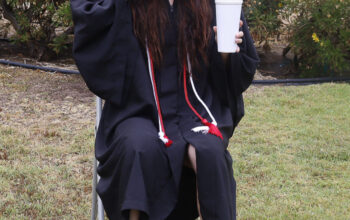Liat Nosrati
Global warming is the result of more than 6 billion people going about their normal day. While trying to find a parking spot at Pierce College may be tough and annoying, it does more than cause students to be late to class. All of that fuel emission being spread through the air is what global warming feeds on. Some students may not fully understand the negative effects of global warming, but they are real and they are happening right now.Dr. William Duxler, physics and planetary science department chair, spoke on how global warming cannot be denied. “It has been shown as clear as something can be, based on absolutely sound evidence, that it’s not a matter of ‘it is going to happen’,” Duxler said. “It is happening.”The temperature of the Earth is determined by the steadiness between the energy released from the light of the sun and absorbed by the Earth and the energy that is given off as infrared radiation from the Earth into space. The amount of carbon dioxide released from people driving their cars day after day alters that balance, because it absorbs the infrared light that is meant to go into space. This process is called the “greenhouse effect;” carbon dioxide is the most efficient greenhouse gas and it is heating up the Earth. “When you heat up the atmosphere, climate patterns are going to change and become less dependable,” said environmental science professor Craig Meyer. “Now, there’s no such thing as a good change in climate.”According to the National Oceanic and Atmospheric Administration (NOAA), because of the greenhouse effect, Earth’s temperature is about 58 F higher than it should be. Although the greenhouse effect takes place naturally, it is amplified due to human activities. There are ways that students can help themselves. Duxler emphasized, “[Students] can inform themselves, they can take environmental science and learn about the issues that are involved.”Students may also educate themselves by checking out Nobel Peace Prize winner Al Gore’s documentary film, “An Inconvenient Truth.” Duxler states that Gore’s documentary is “helping people see that the concern over global warming is scientifically based and it’s not just somebody saying, ‘oh, they think there’s a problem.'””We can help as individuals,” advised Dr. Dale Fields, astronomy professor. “Learn to conserve.” Although the effects of global warming cannot be reversed, people can help slow things down by being practical and using less of what they do not need. People can use a fan instead of an air conditioner on a warm day, turn off a light that is not in use or even take shorter showers. Mike Harris, a 20-year-old computer science major, is aware of the problem at hand. “I do see how people have influenced the faster growth of global warming,” said Harris. “There are many ways you can help. I’ve replaced all my bulbs at home with the florescent ones. That’s a simple thing.”The Earth is going through a time of crisis and although it is evident that there are students who care, there are those who remain apathetic. When asked about Gore’s documentary and whether it was eye-opening, Cyril Palmer, a 19-year-old business major declared, “No, I really don’t care. Maybe later on when I’m older, but not at this stage in my life.” The most efficient way for a student to help is by acknowledging that there is a problem, not only in regards to the scientific aspect of global warming but also with the policies of the government. “There are serious political problems that need to be solved by the governments,” said Duxler.The Kyoto Protocol, a treaty drawn up by the United Nations Framework Convention on Climate Change (UNFCCC), was designed to reduce greenhouse gases by limiting the amount of greenhouse gases produced by each country. However, President George Bush determined that the U.S. would not put this treaty into practice due to energy and economic security.”Nothing’s going to stop a serious problem, but we do have time to change direction,” asserted Duxler.


